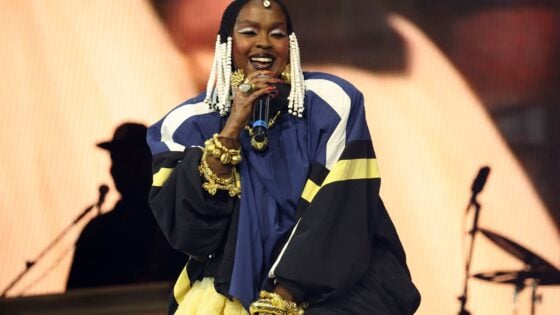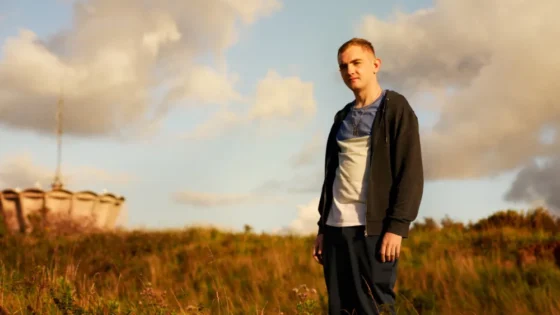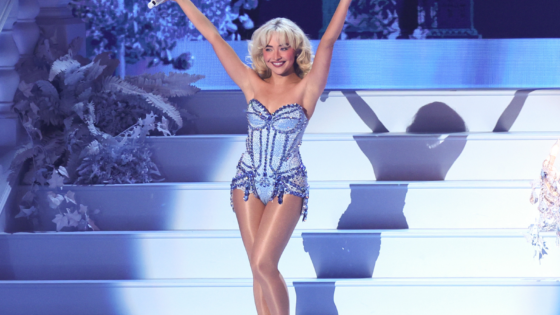Film
‘Beyond Moving’ is an Inspiring Document of Artistic Perseverance
Vikram Dasgupta’s “Beyond Moving” follows a young South African boy born into poverty who becomes a ballet star. It’s utterly compelling and inspiring.
Hot Docs 2020
A Billy Elliot Story with a South African Twist
****
The story of Siphe November sounds as if it were invented for the movies (and it bears more than a passing resemblance to Billy Elliott). But November’s astounding life and his artistic success have been ably and compellingly documented in Vikram Dasgupta’s documentary Beyond Moving. The film charts its subject’s life from his earliest days outside of Cape Town in South Africa, where he seemed destined to a life of poverty, to his international success as a renowned ballet dancer. The title is a double entendre — Dasgupta moves beyond the physical movements of November’s dancing to the passions that undergird them, and it’s also an apt description of the film’s effect, which seems certain to leave more than few teary eyes among viewers.
November is first shown on screen in a low-quality digital video shot years earlier by his first dance teacher, Fiona Sutton Sargeant, an English former ballerina who later settled in South Africa. She lived in Montagu, a mostly white segregated town about 10 km from Zolani, a mostly black impoverished town that was home to November. As a boy, he became a local celebrity because of his dance prowess, which was indebted to folk dances and popular music but was imbued with his instincts. Sargeant was inspired by a choreographed dance November performed with his brother in a talent show, but it wasn’t until a well-off Canadian couple saw him perform that he was able to pursue his passion seriously. The couple, who were visiting South Africa for four months, initially paid for him to move to Montagu to take classes at Sargeant’s dance studio. After he rose to the top of his class, they urged him to send in an audition tape for Canada’s National Ballet School’s training program. Though most dancers appear for in-person auditions, the tape was compelling enough to earn him a spot at a month-long training camp, and eventually full-time admittance to the school in Toronto.
This early footage gives us an invaluable glimpse into November’s early training and how he fits in at his new school. He’s surrounded by children from Canada and elsewhere around the world who’ve grown up in privileged settings; it’s clear that he doesn’t quite fit in at first. He’s used to being more boisterous and a showboat, and he plays the class clown in an early music class once he’s accepted into the ballet school. Yet as soon as the subject turns to dance, he’s instantly in his element, as if a switch had been flicked. Dasgupta has a good sense in these moments to leave the camera on November and allow the dance to play out. Too often when depicting music or dance, films break up performances with quick edits designed to make it more exciting (and decrease the runtime). It’s a counterproductive strategy, though, because the edits sever the connective tissue between the musical notes and the dance movements. When performances are turned into a series of abstract moments it’s easy to become bored; it’s only when the performance develops organically that it catches the audience’s attention. Some of the lovely music that November and others dance to is given extended treatment, including the Russian composer Vladimir Martynov’s achingly tender piece Come In!
Dasgupta, who also edited the film, plays a clever and forgivable trick on his audience by showing an important performance twice. At first, we see how nervous November is ahead of a dance festival in the Netherlands, where he’ll be performing a solo originally written for Mikhail Baryshnikov in front of the country’s leading dancers and its royal family. Despite being part of the only non-professional group on the program, November dazzles the audience and brings them to their feet. Later, though, we learn that one of November’s family members had made a rare visit to see him for the Netherlands performance. They’re shown again later in the film as they take in his performance, with tears running down their face. It becomes a doubly moving moment — at first, it seemed like November was desperate to impress the upper echelons of his profession, but later it’s clear that he was just as determined to impress his family.
If there’s one glaring failing, it’s in how Beyond Moving portrays November’s first instructor, Fiona Sargeant. At first, she seems like a woman who desperately wants to help the impoverished black children of the nation she’s made her home in. But later, when November makes a trip home to see her, she’s oddly testy with her former pupil. In a confessional moment, she unloads on him, all but calling him ungrateful for not putting on dance clinics with her students while he’s home and for not staying in more constant contact. It’s clear that she doesn’t understand the relationship between herself and her former pupil, but there’s also an ugly undercurrent to her tirade, which will leave many viewers wondering how she truly feels about her black students. She seems to think they owe her something, that they should be constantly grateful to someone who takes small steps to rescue them from the racist colonial system that still exists in some form. Dasgupta doesn’t have November or anyone else respond to Sargeant’s complaints, and the lack of pushback leaves one to wonder if he’s aware of their implications.
Despite the lapse of judgment, one would have to make an effort not to be inspired by Beyond Moving. Inspirational films, particularly inspirational documentaries, are a dime a dozen. All too often, filmmakers take the existence of a compelling story as an excuse for shoddy filmmaking. Perhaps they think that if the story is good enough it’ll make up for their lack of skill. That’s why it’s so refreshing to see Dasgupta take his time and allow November’s dances to develop and flourish. There are moments when he looks like he’s about to step off the ground and take flight. Beyond Moving is a tight 80 minutes, but halfway through the film, I found myself hoping for at least another half hour. That’s not to say the movie’s deficient — the best films just leave you yearning for more.
Editor’s Note: Hot Docs was among the film festivals postponed due to the coronavirus pandemic. Goomba Stomp is reviewing select fest entries that elected to premiere digitally for critics.

































